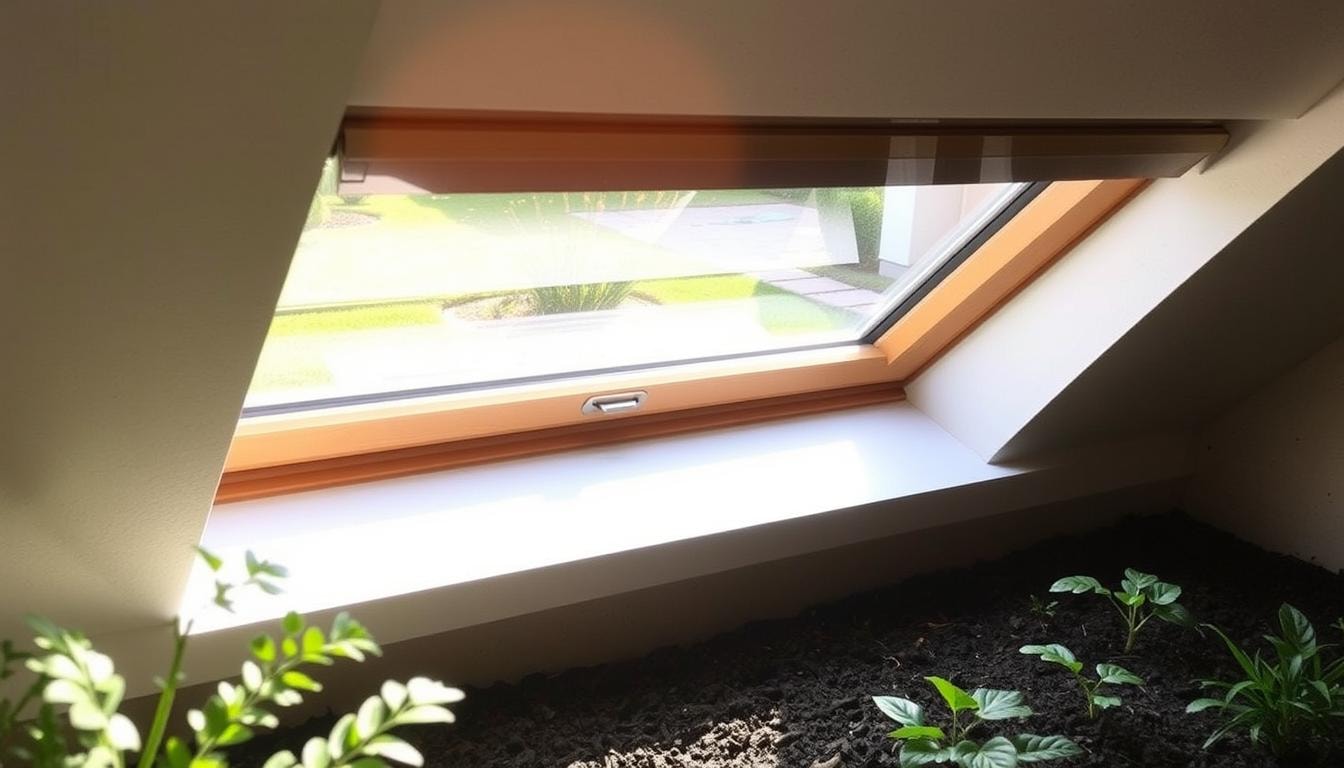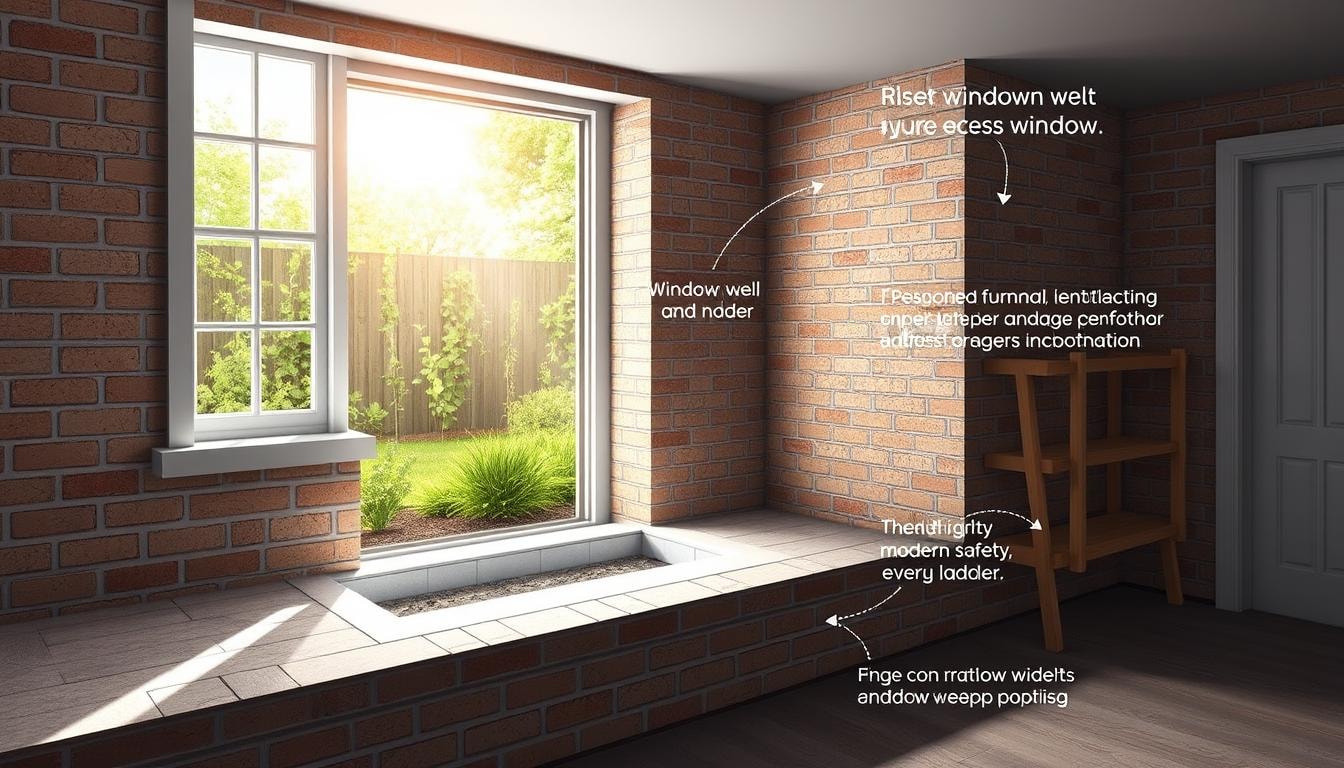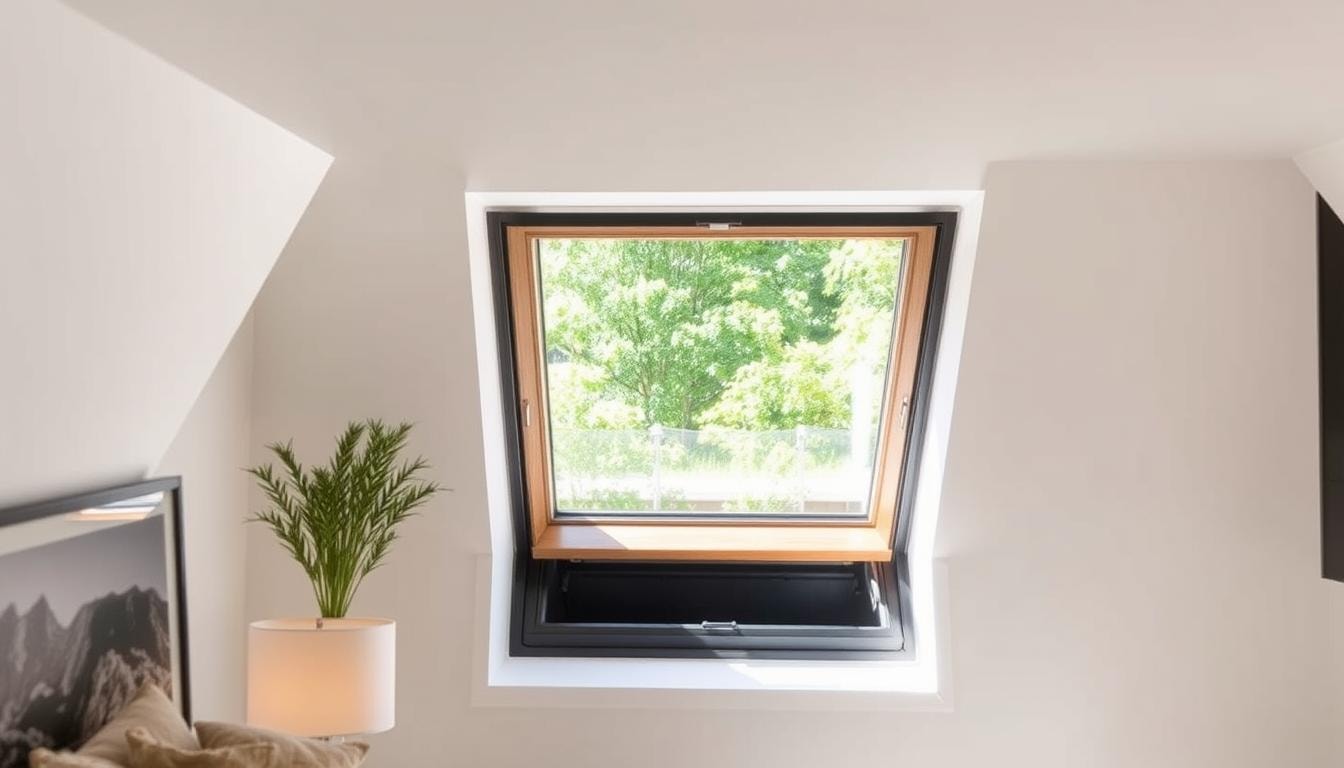Egress Window Installation Near You
Can’t find what you are looking for?
How It Works
-
Answer a few questions about your home project.
-
Within seconds, get matched with top-rated local pros.
-
Compare quotes and choose the best pro for the job.
Egress Window Installation In Your Area
Egress Window Installation: What You Need to Know
Meta Description: Discover the essential steps and requirements for egress window installation. Learn about costs, building codes, and safety considerations for your basement project.
Thinking about adding an egress window to your home? These large openings provide a crucial emergency exit. They also offer more than just safety features.
Egress windows have specific code requirements and installation costs. Understanding these aspects is vital for making a smart decision for your home.

Key Takeaways
- Egress windows must meet minimum size requirements for emergency exit purposes.
- Installing an egress window can increase a home’s resale value and provide natural light and ventilation.
- The average cost for egress window installation ranges from ,000 to ,000, depending on various factors.
- Obtaining necessary permits and ensuring proper waterproofing and drainage are crucial considerations.
- Hiring a professional contractor can ensure your egress window installation meets all local building codes and safety standards.
Understanding Egress Window Requirements
Egress windows provide a safe escape route during emergencies. They must meet specific dimensions to comply with local building codes. Understanding these requirements is crucial for basement installations or renovations.
Minimum Dimensions for Egress Windows
An egress window’s opening must be at least 5.7 square feet. The minimum height is 24 inches, and the minimum width is 20 inches.
The window’s bottom can’t be more than 44 inches from the floor. These dimensions allow easy escape during emergencies.
Egress Window Well Specifications
Egress window wells are vital for proper installation. The well must extend 3 inches above the grade line.
It should go 8-12 inches below the windowsill. The well needs to be 2-3 inches wider on each side of the window.

Following these requirements ensures compliance with building codes and occupant safety. Consult local authorities and professionals for proper basement installation.
Benefits of Installing an Egress Window
An egress window in your basement offers many perks. It boosts your home’s function and value. These windows are required by code and provide several advantages.
Increased Home Value
An egress window installation can boost your home’s resale value. It can add 50-70% of an above-grade bedroom’s value. This makes the egress window cost a smart choice.
Natural Light and Ventilation
Egress windows bring more light and fresh air to your basement. Their large size helps air flow, making the space cozier. This improved energy efficiency is great for large rooms or finished basements.
An egress window also serves as an additional emergency exit. This safety feature is crucial for basement spaces used as bedrooms. It gives homeowners peace of mind and can increase resale value.
Installing an egress window is a smart move. It enhances your home’s function and value. With more light, better air, and added safety, your basement becomes a desirable living space.

Preparing for Egress Window Installation
Installing an egress window requires careful planning. First, check with your local building department about codes and regulations. You’ll likely need permits and approvals for the project.
Next, contact utility companies to mark underground services near the installation area. This step prevents accidents during excavation and construction.
- Prepare the site by excavating the area where the egress window will be installed, ensuring the proper dimensions and depth for the window well.
- Create the window opening in the foundation wall, taking care to maintain the required size and specifications as per local building codes.
- Install a gravel base to facilitate proper water drainage around the window well, preventing moisture buildup and potential damage to the foundation.
Proper preparation is key to a successful egress window installation. By following these steps, you’ll ensure compliance and safety. Your basement will become more functional and secure.
Step-by-Step Egress Window Installation Process
Installing an egress window in your basement needs careful planning. It must follow building codes and safety standards. Let’s explore the steps to install an egress window.
- Excavation and Site Preparation: First, dig a large hole around the window location. This hole should be 6-7 feet across. It prepares the site and allows for proper water drainage.
- Creating the Window Opening: Next, create the window opening in the wall. This may involve expanding a small window or cutting a new hole. The opening must be the correct size per local building codes.
- Placing Gravel for Drainage: Add a layer of gravel in the excavated area. This helps with water drainage. It prevents water buildup around the basement window.
- Fitting the Window Well: Secure the window well to the foundation wall. The window well is crucial for ventilation and emergency escape.
- Installing the Egress Window: Install the egress window itself. Level and plumb the window, keeping it square. Seal the gap between the window and the opening.
- Finishing Touches: Add the final touches to complete the installation. Backfill the area and install the window well cover. Address any interior basement renovation work as needed.
Follow this process and local building codes for a successful installation. This ensures a compliant egress window installation in your basement.
Factors Affecting Egress Window Installation Cost
Several key factors influence the cost of an egress window installation. These include window size, type, and installation complexity. Site preparation and excavation needs can also impact the total cost.
Building codes and local requirements are crucial considerations. Labor costs, including crew expertise, can affect the final price. Egress window installations typically range from ,000 to ,000.
- Window size and type: Larger egress windows and customized designs are usually more expensive.
- Installation complexity: Excavation, structural changes, and drainage issues can increase costs.
- Building code requirements: Complying with local codes and getting permits adds to the expense.
- Labor and expertise: The crew’s hourly rate and experience level impact the final cost.
To get the best value, consider these factors carefully. It’s wise to obtain multiple quotes when planning your egress window installation.
Obtaining Necessary Permits and Approvals
Getting permits is vital for egress window installation. Homeowners must submit project details and diagrams to their local building department. This process can take weeks, so plan accordingly.
Consult the local building inspector about building codes and code requirements. This ensures your basement window installation follows local regulations and local codes. Skipping permits may lead to penalties or issues with buyers and insurers.
Some areas don’t require permits for replacement windows, except for egress windows. Always check your area’s specific local building codes for your house and basement space.
Knowing the rules helps avoid delays during your basement renovation. It’s best to be prepared and follow all guidelines for a smooth project.
Waterproofing and Drainage Considerations
Proper waterproofing and drainage are vital for a successful basement window installation. The window well must allow water to drain away from the foundation wall. This is typically done through gravel and a drainage pipe connected to the home’s sump pump.
Compacting and backfilling the area around the window well is crucial. This prevents water buildup and potential flooding. Waterproofing measures like flashing tape and sealants protect the basement from moisture intrusion.
These steps are especially important for basement egress windows. They provide an essential escape route in emergencies. Proper waterproofing also prevents water damage that can lead to mold and structural problems.
When installing an egress window, inspect the foundation wall for cracks or gaps. Seal these areas to ensure a watertight seal. A window well cover can prevent debris from blocking the drainage system.
Addressing waterproofing and drainage ensures a code-compliant basement window installation. It protects the basement from water issues and enhances the home’s value. These steps help homeowners enjoy a well-designed, functional basement window with minimal water-related risks.
Window Well Covers and Safety Features
Window well covers protect against falls and keep out debris. They come in clear, solid, and open grid designs. These covers are easy to remove from inside for emergency exits.
Types of Window Well Covers
Clear covers let natural light into basements. Solid covers provide a secure barrier. Open grid designs allow airflow and visibility while offering protection.
Egress Ladder Requirements
Deep window wells need egress ladders as per building codes. These ladders must be permanently attached and not block the window opening. They should extend 3 to 6 inches beyond the well for safe exits.
Proper installation and maintenance of covers and ladders are vital. Regular inspections and quick repairs keep your home safe and code-compliant.
Interior Finishing and Basement Renovations
After installing a basement egress window, homeowners can start interior finishing projects. This includes adding drywall, flooring, and other finishes to create a cozy living space. Good insulation, temperature control, and lighting are key for a comfy basement.
An egress window opens up many possibilities for your basement. It can become a home gym or an extra bedroom. This window is a great starting point for a bigger basement renovation.
When planning, always consider building codes and egress requirements. These are crucial for a safe and legal renovation. Make sure the window size and placement meet all necessary code requirements.
Choose the right window type, like casement windows or in-swing windows. The installation process is important too. A well-planned egress window can make your basement safe, comfy, and good-looking.
Maintenance and Care for Egress Windows
Proper maintenance ensures the long-term functionality and safety of egress windows. Regularly inspect the window well cover and attached ladders. Check for signs of erosion or water buildup around the window well.
Keep the window well clear of debris and maintain proper drainage. Clean the window well regularly and ensure the drainage system works correctly. These steps prevent moisture problems and potential foundation damage.
Take proactive measures to keep your egress window reliable. This will ensure it provides a safe emergency exit for years to come.
- Inspect the window well cover and attached ladders at least twice a year to ensure they are in good working condition.
- Monitor the area around the window well for signs of erosion or water buildup and address any issues promptly.
- Keep the window well clear of debris and maintain proper drainage to prevent moisture problems and potential foundation damage.
- Comply with local building codes and regulations regarding the maintenance and care of egress windows.
Regular care keeps egress windows functional and safe. Follow these best practices to meet code requirements. Your basement installations will provide a reliable emergency exit for years.
Hiring a Professional Contractor
Installing an egress window is best left to professionals. Contractors have the expertise and equipment to do the job right. They ensure compliance with local building codes and provide necessary licenses.
Professional contractors offer many advantages. They help obtain permits and approvals, and provide warranties on their work. This gives homeowners peace of mind about the installation quality.
Contractors handle complex tasks like excavation and concrete cutting. They also manage window placement and waterproofing effectively. Their experience is invaluable for a successful installation.
When choosing a contractor, do your homework. Research their qualifications and get multiple quotes. Make sure the company is insured and accredited.
Proper installation is vital for water drainage and basement window functionality. It’s also crucial for home safety. A pro can guide you through the installation process.
They’ll recommend the best window type and size for your basement space. Hiring a pro may cost more initially, but it’s worth it.
A qualified contractor can save you time and money long-term. For installing an egress window, ensure the job’s done right by professionals.
FindPros – The Easy Way to Find Pros for Your Egress Window Project
Struggling to find the right contractor for your egress window installation? Look no further than FindPros. Our platform connects you with top-rated local pros who specialize in basement windows, sliding glass doors, casement windows, and more. Simply answer a few questions about your home project, and we’ll match you with qualified professionals who can provide competitive quotes.
Say goodbye to the guesswork – FindPros makes it easy to find the perfect pro for your egress window installation, whether you’re a seasoned DIYer or a homeowner looking for a reliable expert. With FindPros, you’ll get the best pricing when multiple pros compete for your job and find the professionals you’re most comfortable working with, considering the many factors involved in a successful poured concrete foundation project.
Conclusion
An egress window is a smart investment for your home. It boosts safety, functionality, and resale value. Understanding code requirements, installation process, and cost factors helps homeowners make informed decisions.
Hiring a professional contractor and getting proper permits are crucial steps. Regular maintenance ensures your egress window remains reliable. This safety feature can also improve your living space and home’s appeal.
Successful egress window installation involves many factors. These include concrete anchors, basement installations, window size, and energy efficiency. Following local building codes ensures safety standards are met.
Your basement window installation can enhance your property’s value and functionality. It’s a smart addition that serves multiple purposes for your home.
Frequently Asked Questions (Egress Window Installation)
MOST POPULAR CITIES
Browse by State- Alameda
- Costa Mesa
- Laguna Beach
- Orange
- Alhambra
- Culver City
- Lancaster
- Oroville
- Anaheim
- Daly City
- Livermore
- Oxnard
- Antioch
- Davis
- Lodi
- Pacific Grove
- Arcadia
- Downey
- Lompoc
- Palm Springs
- Bakersfield
- El Centro
- Long Beach
- Palmdale
- Barstow
- El Cerrito
- Los Angeles
- Palo Alto
- Belmont
- El Monte
- Malibu
- Pasadena
- Berkeley
- Escondido
- Martinez
- Petaluma
- Beverly Hills
- Eureka
- Marysville
- Pomona
- Brea
- Fairfield
- Menlo Park
- Port Hueneme
- Buena Park
- Fontana
- Merced
- Rancho Cucamonga
- Burbank
- Fremont
- Modesto
- Red Bluff
- Calexico
- Fresno
- Monterey
- Redding
- Calistoga
- Fullerton
- Mountain View
- Redlands
- Carlsbad
- Garden Grove
- Napa
- Redondo Beach
- Carmel
- Glendale
- Needles
- Redwood City
- Chico
- Hayward
- Newport Beach
- Richmond
- Chula Vista
- Hollywood
- Norwalk
- Riverside
- Claremont
- Huntington Beach
- Novato
- Roseville
- Compton
- Indio
- Oakland
- Sacramento
- Concord
- Inglewood
- Oceanside
- Salinas
- Corona
- Irvine
- Ojai
- San Bernardino
- Coronado
- La Habra
- Ontario
- San Clemente